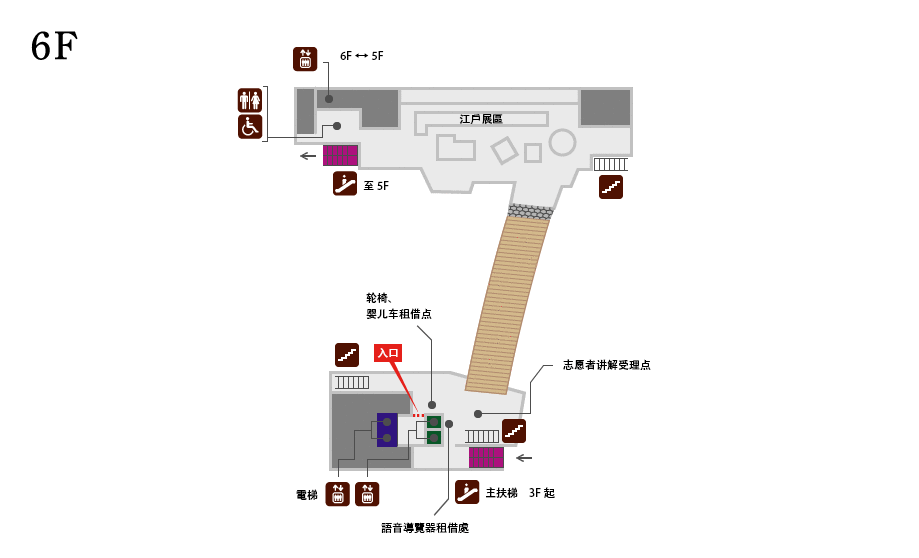
E1_ Edo Castle and the District Zones _ Nihonbashi Bridge
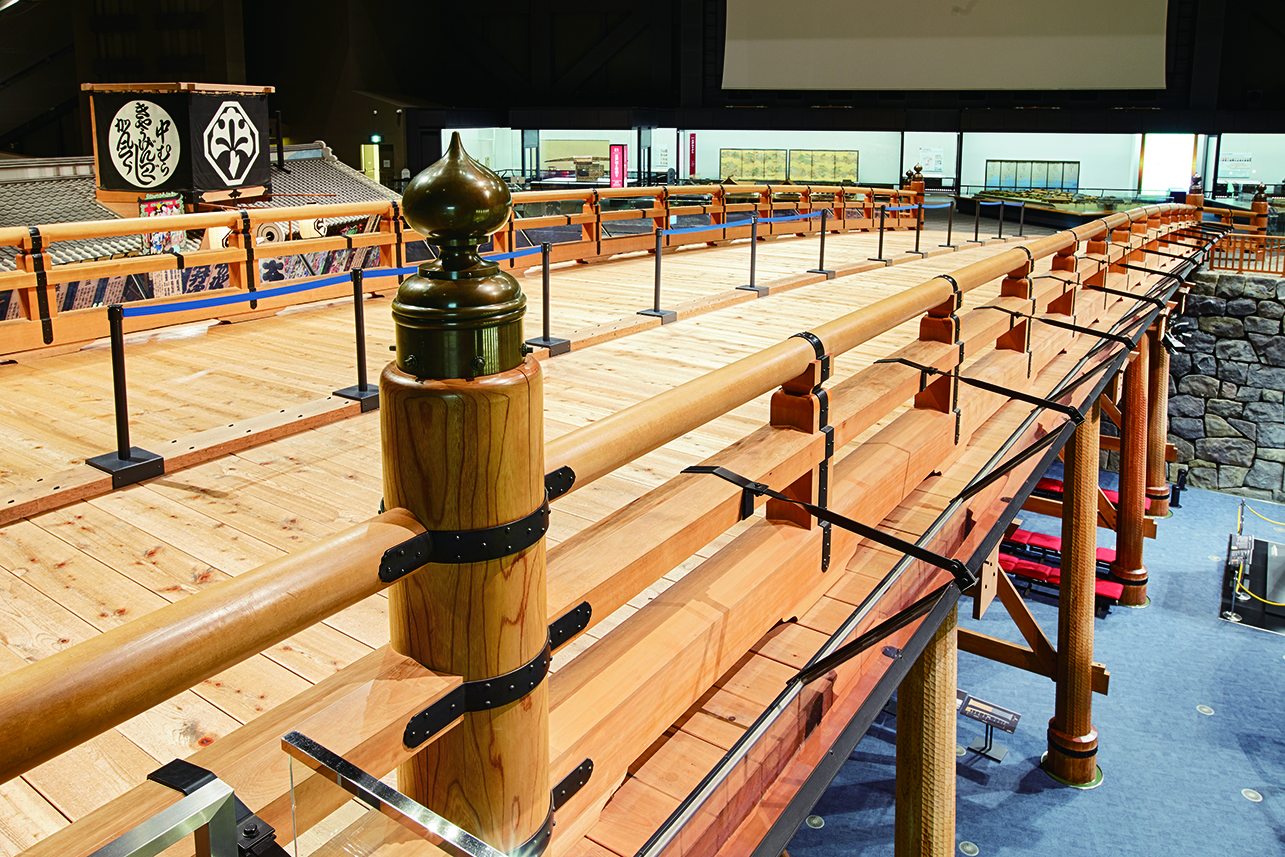
- Commentary
- The Nihonbashi Bridge was approximately fifty-one meters in length and some eight meters in width. This model reproduces the northern half of the bridge, according mainly to records of reconstruction from 1806 and 1829.
Bridge piles, beams, cross beams, and newel posts are made of zelkova; handrails and floorboards are fashioned from Japanese cypress. The two bronze ornamental handrail tops are modeled on existing ones, which contain an inscription dated 1658.
E1 _ Edo Castle and the District Zones _ The residence of daimyō Matsudaira Tadamasa
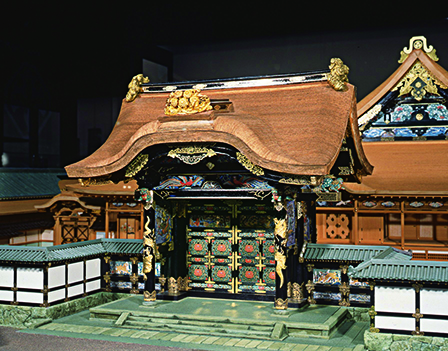
- Commentary
- Matsudaira Iyonokami Tadamasa (1597-1645), daimyo of the Echizen-Fukui domain, built his “upper residence” in front of the Ōtemon gate of the Edo Castle. This residence was a magnificent Momoyama-style compound, constructed on a huge lot. In 1657, however, during the disastrous “Meireki Fire,” this daimyo’s mansion burned to the ground. Thereafter, such luxurious residences were no longer built.This model was reproduced based mainly on three sources: Illustrations in the Iyo-dono yashiki sashi-zu [Plan of Lord Iyo’s Mansion] (Ikeda Bunko Library, Okayama University), the Edo-zu byōbu [Screens of Edo] (National Museum of Japanese History), and the Kōra Kōnen oboegaki [Memorandum of Kōra Kōnen] (Tokyo Metropolitan Central Library).
E1_ Edo Castle and the District Zones _ The Townspeople’s District around Nihonbashi
201512.jpg)
- Commentary
- This model depicts a section of the townspeople’s (chōnin) quarters north of Nihonbashi Bridge during the early Edo period. The surface area represented by this model is roughly equivalent to that occupied by Matsudaira Tadamasa’s “upper residence.” A comparison of the two models shows that daimyo compounds were spacious and contained many buildings, while townspeople lived in cramped quarters. This model is based on the Edo-zu byōbu [Screens of Edo] (National Museum of Japanese History), Edo meisho-zu byōbu [Screens of famous sites in Edo] (Idemitsu Museum of Art), and Bushū Toshimanogōri Edo no shōzu (National Diet Library).
E1 _ Edo Castle and the District Zones _ Edo, the Shogun’s Castle Town _ Honmaru and Ninomaru Palaces of the Edo Castle during the Final Years of the Tokugawa Shogunate
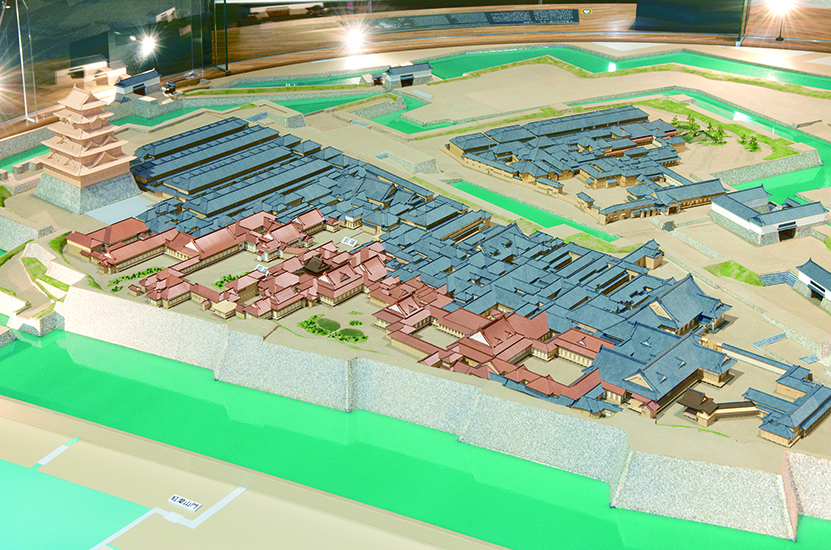
- Commentary
- At the center of Edo Castle was the Uchiguruwa, or inner zone, surrounded by the inner moat. The Uchiguruwa comprised the Honmaru, Ninomaru and Nishinomaru compounds and the Fukiage Garden. The Honmaru, Ninomaru and Nishinomaru compounds each included their own palaces. This model reproduces the Honmaru and Ninomaru palaces in the last years of the Tokugawa Shogunate, on a scale of 1/200. With a floor area of roughly 37,597 square meters in around 1845, the Honmaru Palace was one of the largest wooden buildings of the Edo Period.
E1 _ Edo Castle and the District Zones _ The Ōhiroma, Matsunorōka and Shiro shoin of Edo castle
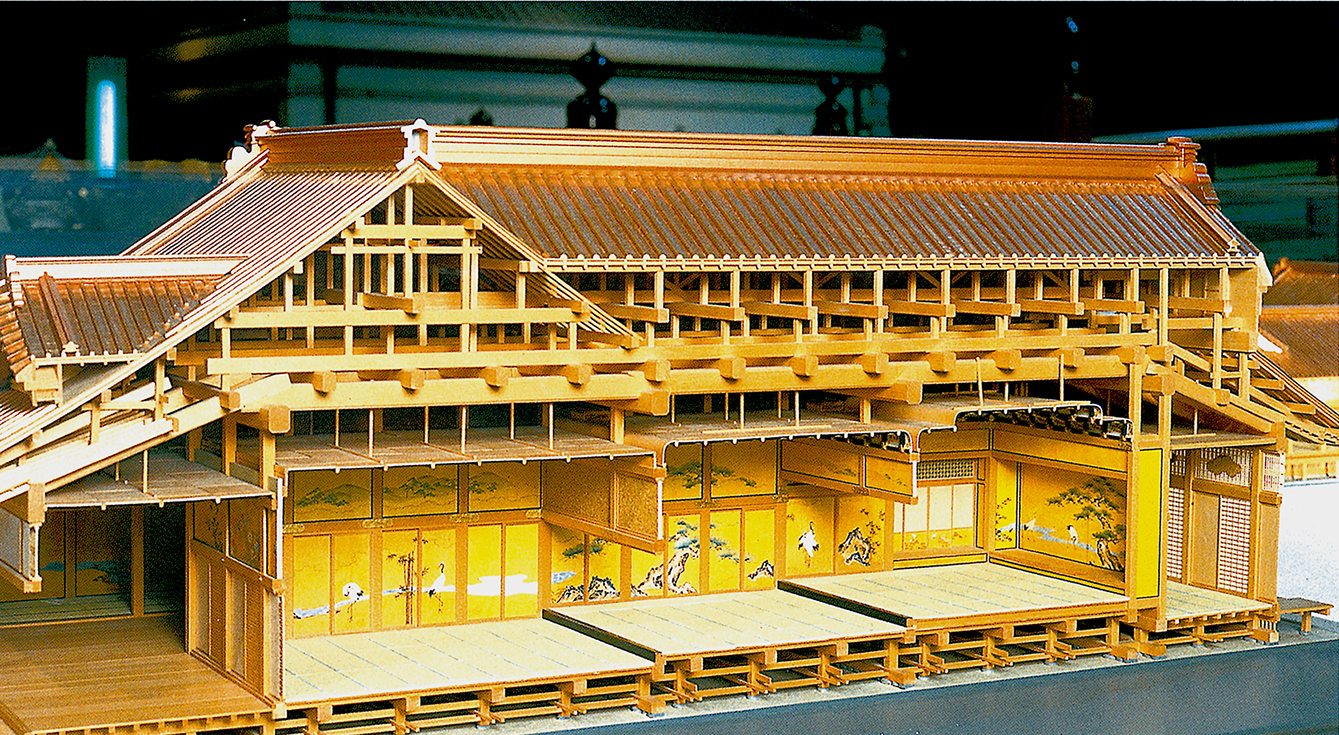
- Commentary
- This is a reconstruction of the Grand Audience Hall (Ōhiroma) where various daimyo had audiences with the Shogun, the Pine Tree Corridor next to it, the Inner Hall (Shiro Shoin) rooms used for meetings with imperial envoys, and the Noh stage attached to the Ōhiroma. The building was reconstructed based on the plans from when it was rebuilt in 1845. The paintings on the sliding screens (fusuma), ceiling and walls were based on Edojō Honmaru tō shōhekiga eyō [Preliminary Sliding-door Paintings for the Edo Castle Honmaru, etc.] (Tokyo National Museum) from the Kōka era (1844-1848).



201512.jpg)











